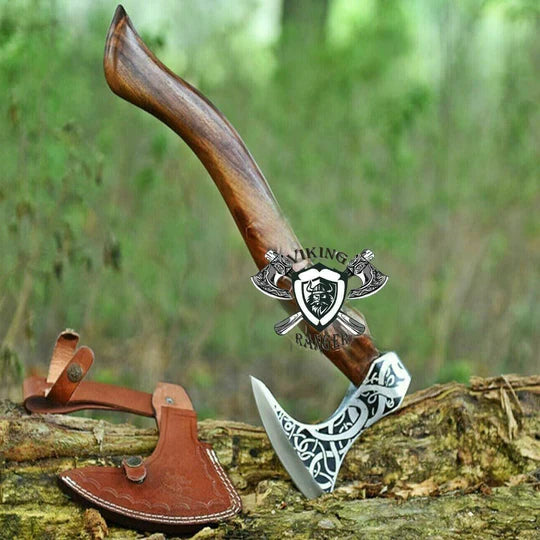Table of Contents:
1.Introduction to the Viking Hand Axe
2.History and Evolution of the Viking Hand Axe
3.Anatomy of the Viking Hand Axe
4.Techniques for Wielding the Viking Hand Axe
5.Symbolism and Cultural Significance
6.Modern Interpretations and Applications
7.Conclusion:
1. Introduction to the Viking Hand Axe
In the annals of history, the Vikings stand out as fierce warriors acknowledged for their prowess in conflict and their mastery of weaponry. Among the array of guns wielded through those seafaring warriors, the Viking axe holds a unique vicinity. This article delves into the intricacies of this mighty weapon, exploring its records, creation, techniques for wielding it, and its enduring legacy.
2. History and Evolution of the Viking Hand Axe
The Viking hand axe, additionally called the bearded awl or skeggox, traces its origins again to the early medieval duration. Initially used as a device for numerous obligations including woodworking and farming, it advanced into a formidable weapon during the Viking Age. Its design underwent refinement over the centuries, with versions rising to healthy distinctive fight situations.
3. Anatomy of the Viking Hand Axe
Understanding the anatomy of the Viking hand axe is important for appreciating its effectiveness in struggle. Characterized by means of its distinctively fashioned head with a curved reducing area and a stated beard or hook extending beneath the blade, the axe offered versatility in fight. The take care of, normally made from timber, was designed to provide a stable grip even as taking into account swift and specific moves.
4. Techniques for Wielding the Viking Hand Axe
The proficiency of Viking warriors in wielding the hand axe become legendary. Various strategies were employed relying on the situation, whether in near combat or all through raids. Training inside the use of the awl concerned learning techniques for both offense and defense, which include slashing, reducing, and throwing. Additionally, strategic footwork and positioning have been important for maximizing the axe's effectiveness at the battlefield.
5. Symbolism and Cultural Significance
Beyond its practical software as a weapon of battle, the Viking hand axe held deep cultural and symbolic importance for the Norse humans. It was often decorated with complicated carvings and runes, reflecting the craftsmanship and artistry of the generation. In Norse mythology, axes had been related to gods which includes Thor, further raising their status as symbols of power and safety.
6. Modern Interpretations and Applications
While the Viking Age has lengthy handed, the legacy of the hand awl endures in cutting-edge times. Today, enthusiasts and historians alike are trying to find to duplicate the craftsmanship of these ancient weapons, forging replicas the use of conventional strategies. Additionally, the hand awl maintains to inspire artists, writers, and filmmakers, shaping popular perceptions of Viking lifestyle and war.
7. Conclusion: Embracing the Legacy of the Viking Hand Axe
In conclusion, the
Viking axe stands as a testament to the ingenuity and martial prowess of the Norse people. From its humble origins as a utilitarian device to its transformation right into a fearsome weapon of struggle, the hand awl played a extensive position in shaping the course of records. By information and embracing its legacy, we advantage insight into the iconic spirit of the Viking Age and the timeless appeal of this mighty weapon.







